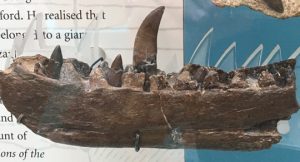Stem Cell Research Provides Clues to Human Tooth Regeneration
Scientists from the University of California have identified the processes by which an Alligator is able to grow a replacement tooth if it loses one. A better understanding of this at the cellular level could eventually lead to a radical reform of dentistry, with patients able to grow a replacement tooth should one have to be removed due to decay or trauma.
Stem Cell Research
The Alligators used in the study (Alligator mississippiensis) are one of a number of extant, vertebrate genera that are able to replace teeth that are lost throughout their adult lives. Reptiles and fish have this ability to regenerate teeth if they are lost and also dinosaurs had teeth replacement too. Quite helpful if you are a seven tonne Tyrannosaurus rex with arms so tiny that they could not even reach their mouths to clean their teeth, had toothbrushes been around in the Late Cretaceous.
Tooth Replacement Frequently Observed in Fossils Representing Dinosauria

The partial dentary for teeth associated with Megalosaurus bucklandii. Picture credit: Everything Dinosaur.
Picture credit: Everything Dinosaur
The picture above shows the jaw of the first dinosaur to be scientifically described (Megalosaurus bucklandii), teeth erupting through the jaw bone can be clearly identified.
For models and replicas of Megalosaurus (whilst stocks last) and other meat-eating dinosaurs: CollectA Prehistoric Life Models and Figures.
Identifying Tooth Components
Using powerful microscopes, the Californian research team were able to identify a “family” of tooth components that made up the conical teeth of these predators. There was the functioning tooth in the jaw, a replacement ready to erupt and a third element, the dental lamina.
A spokesperson from Everything Dinosaur commented:
“This is essentially a conveyor belt operation, as the functioning tooth is lost, then the other family members advance to ensure that the Alligator retains its bite.”
The dental laminae contains stem cells from which the teeth replacement function is initiated. It is hoped that with a better understanding of this dentition, scientists may be able to isolate the stem cells and genetically combine them with tissue cells from the human jaw. If this could be done, then it raises the possibility of human beings being able to grow replacement teeth, to give us all a “smile like a crocodile”.
To read more about this research: We Could All Soon Have the Smile of a Crocodile.

